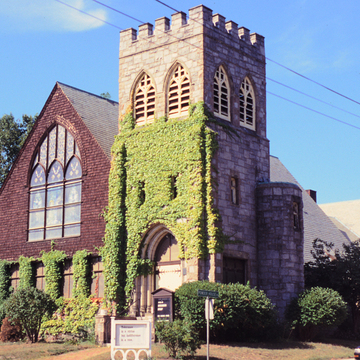After graduating from Harvard in 1774, David Osgood moved to Medford to serve as minister for the town's parish church. Records of the costs for materials in building his two-and-a-half-story house in 1785 survive, as do Osgood's diaries. The windows are framed well out from the clapboard facade, and the roof comes down to the second floor windows. A center bay doorway framed with pilasters and
You are here
Unitarian Universalist Parsonage and Unitarian Universalist Church
1785. 141 High St. 1893–1894, J. Merrill Brown. 147 High St.
If SAH Archipedia has been useful to you, please consider supporting it.
SAH Archipedia tells the story of the United States through its buildings, landscapes, and cities. This freely available resource empowers the public with authoritative knowledge that deepens their understanding and appreciation of the built environment. But the Society of Architectural Historians, which created SAH Archipedia with University of Virginia Press, needs your support to maintain the high-caliber research, writing, photography, cartography, editing, design, and programming that make SAH Archipedia a trusted online resource available to all who value the history of place, heritage tourism, and learning.


